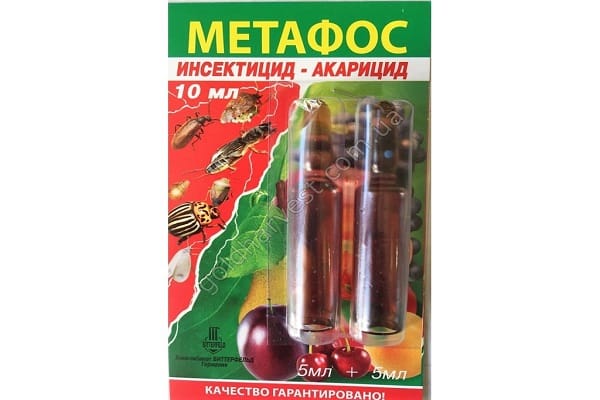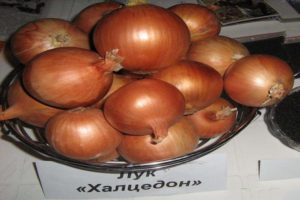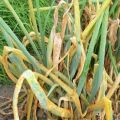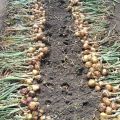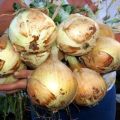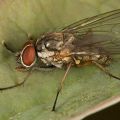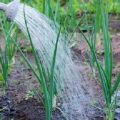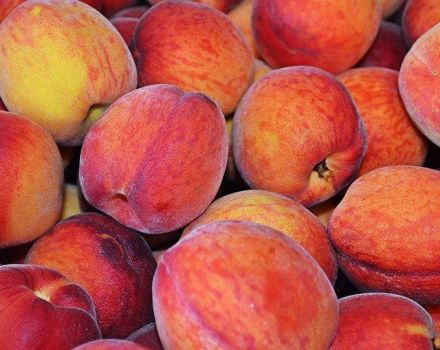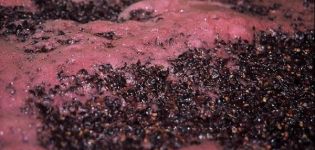How to deal with onion pests and what should be done for treatment?
Pests of onions and the fight against them - this is how the first question sounds, which many gardeners are puzzled with, who have found small insects in the onion garden. How to determine the type of pest, and most importantly, how to get rid of it in the shortest possible time?
What pests affect onions?
Before starting the fight against insects that attacked the onion bed, you need to correctly determine the type of pest. The efficiency of processing depends on whether the identification was made correctly. What insects like onions?
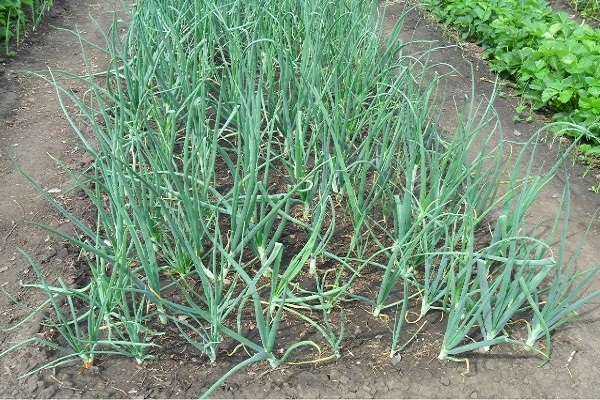
Onion fly
It affects the culture in the first period of growth. During a massive summer, insects lay eggs between rows of onions. Under favorable conditions, after a week, worms appear that do not destroy the green sprouts, but climb inside the bulbs and begin to eat them. The danger of this insect is that only a couple of larvae are able to kill the plant in a short time. Depending on the location of the region, 2-3 generations of flies are activated during the growing season.
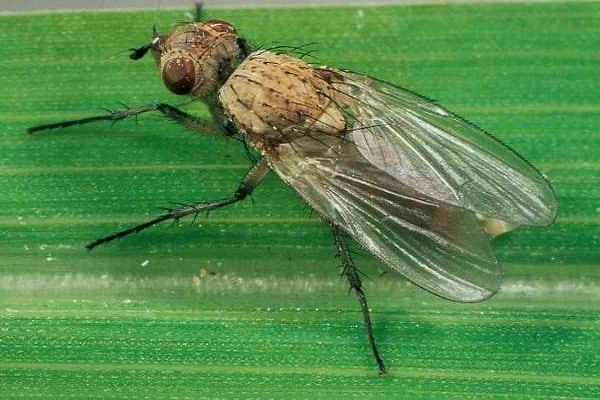
Root mite
Another of the small insects that infect onions during the growing season and storage. Pests reproduce most actively in warm rainy summers. Root mite females lay about 350 eggs, from which larvae emerge. Adults and young individuals eat juicy scales, as a result of which the turnip turns into dust. The withered twisting stems, the surface of which is covered with spots of white color, testify to the attack of unexpected guests.
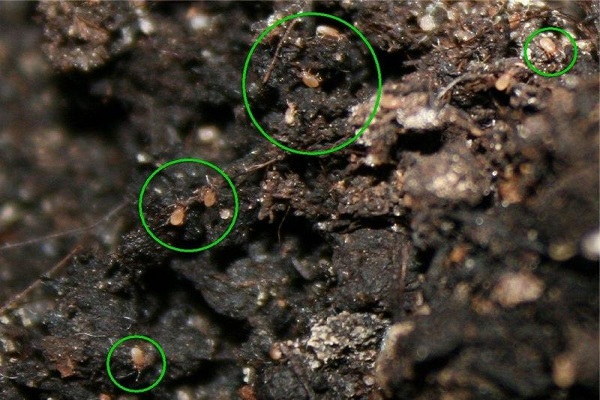
Onion stem nematode
At the last stage of growth, onions are affected by small worms. First, the nematode feeds on juicy feathers, and then on the turnips themselves. In plants attacked by a nematode, feathers become lighter and deformed. The stems covered with swollen areas quickly wither and die. At the time of the appearance of external signs, the bulb is already severely damaged.
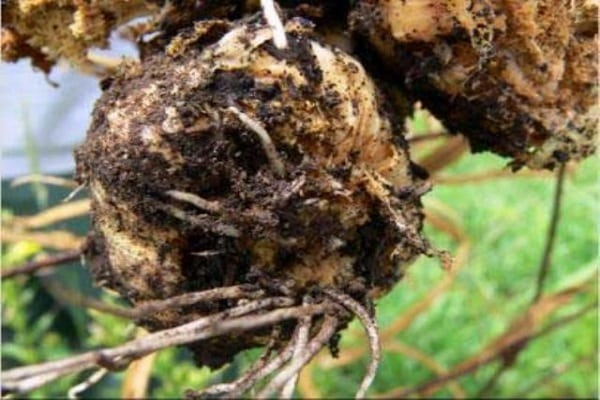
Onion weevil
A distinctive feature of the pest is a long, slightly bent nose. The larvae hatched from the eggs, which the female insect laid with the arrival of spring, inflict the greatest damage on the onion. If the planting is not immediately processed, the larvae quickly climb inside the feathers and eat them. A sign that insects have begun to be active are elongated white spots on the surface of the feathers. The bugs are also quite voracious, as they suck the juice from the greens with the help of the trunk.
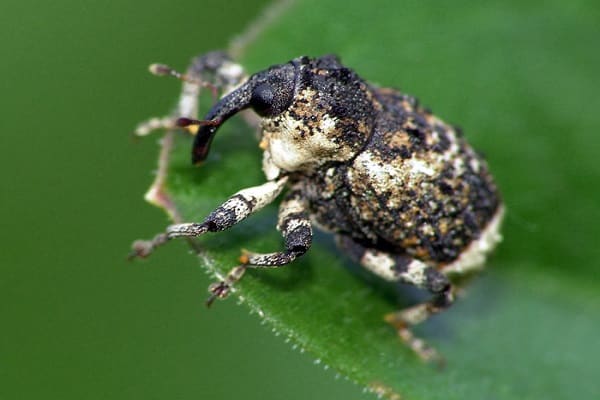
Onion hoverfly
The large bronze-green fly lays eggs, from which gray-green larvae hatch, which feed on the pulp of the turnip. Most often, the hoverfly lays eggs on already diseased plants.The danger of a pest lies in the fact that it is rather difficult to identify it - when there are no signs on the upper part, the lower part is already quite spoiled. If nothing is done, the hoverfly will remain for the winter and harm crops in the next season.
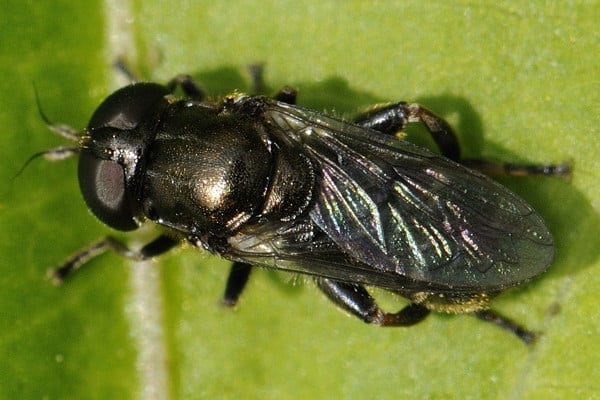
Onion (tobacco) thrips
Small insects attack young shoots soon after they appear on the surface. From the eggs laid on the tops of the feathers, yellow worms hatch. In a matter of days, the affected plants are covered with silvery spots and small black dots. As a result of the vital activity of pests, the onion turns yellow and dries up.
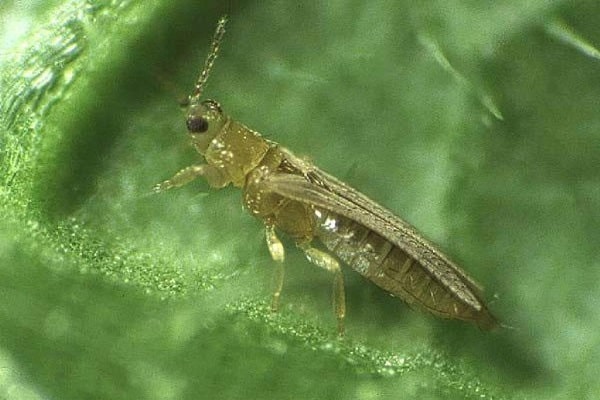
How can pests be prevented?
Since the fight against voracious insects does not always end successfully, it is better to try to avoid the appearance of pests in your area. What manipulations will help ward off insects from the onion garden? List:
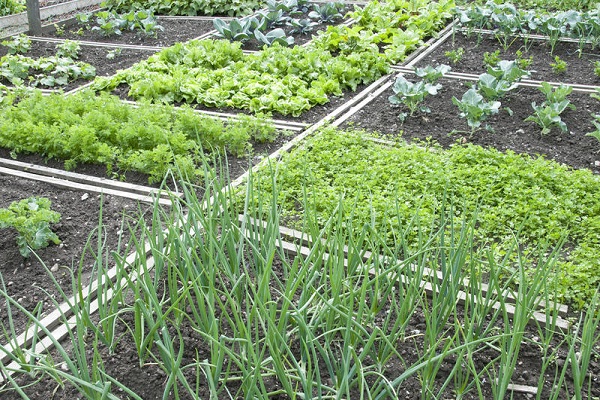
- Compliance with the rules of crop rotation. Like most cultivated plants, onions can be planted in the same place only 3-4 years after the first planting.
- Digging the soil. On the eve of winter, the garden bed is carefully cleaned and dug up. Re-digging is carried out in the spring.
- Planting carrots. Since the leaves of this plant produce phytoncides, the aroma of which is not to the liking of many insects, the culture is placed next to the onion bed.
- Sevka processing. To destroy microorganisms on the surface of the onions, planting material is soaked in a weak solution of potassium permanganate or copper sulfate, and then dried and heated at a temperature of + 30– + 40 ⁰С or lowered water for 10 minutes, the temperature of which is + 50– + 55 С.
- Spraying. In order to scare off pests, onions are treated with wormwood infusion.
- Care. The bed must be weeded and loosened regularly. Manipulation not only activates turnip growth, but also helps to identify diseased or insect-damaged plants.
- The choice of the variety. Thanks to the work of breeders, there is a large assortment of varieties on sale, the overwhelming majority of which are resistant to bacteria. Diseases of onion and their treatment take a lot of time from the gardener, thereby distracting from other equally serious problems.
- Early landing. Onions are planted immediately after the soil dries out from melt water. The earlier the planting is done, the more the plants will get stronger by the time the pests breed.
As you can see, the rules of prevention are very simple, so even a person who first started growing onions can follow them. However, even in spite of all these actions, insects often attack the culture. What to do in this case?
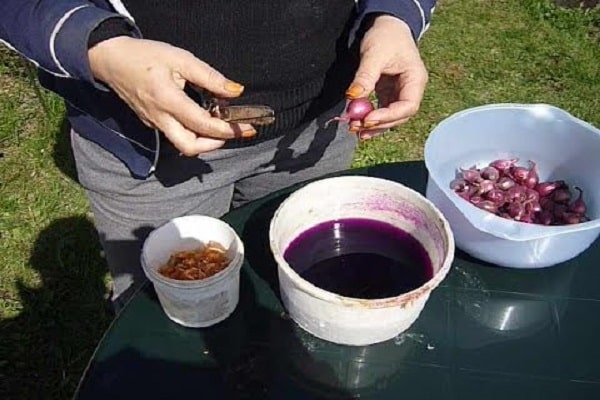
How to deal with pests?
Unfortunately, there is no single scheme for controlling onion pests. The list of manipulations directly depends on the type of insect. So, an infusion of herbs with a pungent smell will help get rid of onion flies and onion hoverflies: garlic, wormwood, tobacco, hot red pepper. Fertilizing with urea will help scare off pests. For prevention purposes, the bulbous beds are covered with mulching material.
If the garden bed is attacked by weevils, infusions of plants with a strong aroma are used as weapons. The insect will definitely not covet onion, from which the smell of celandine, mustard or tansy emanates. In addition to spraying the plants, you can generously sprinkle with chopped dry herbs. The beds are dusted with wood ash and tobacco leaf powder.

To get rid of onion thrips will help all the same "aromatic" mixtures. The most effective remedies are prepared as follows:
- Put 1 kg of wormwood in a saucepan and pour 3 liters of water, after which the mixture is boiled for 20 minutes and cooled. Spray onions 2 times with an interval of 7 days.
- Stir 2 g of mustard powder in a glass of water. The mixture is insisted for 48 hours. To prepare the working solution, the volume of the concentrate is adjusted to 1 liter.
To prevent the appearance of a pest, organic residues are carefully removed before winter. The instrumentation necessary for planting is treated with a disinfectant. In case of severe infection, onions are treated with chemicals, such as EDG, Aktara.
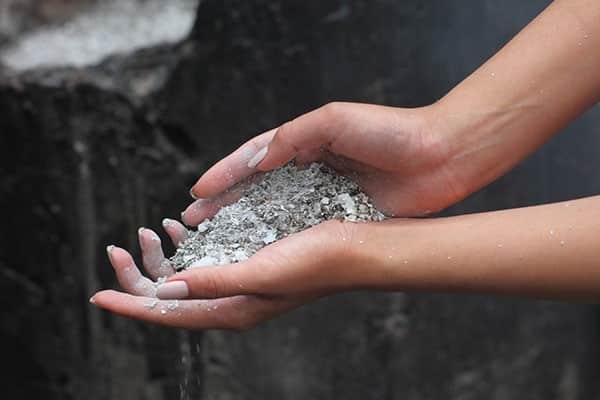
For the destruction of onion moth and a number of other insects, the following agents are widely used:
- 300 g of wood ash is poured with boiled water, after which it is left to infuse. For better adhesion, 40 g of soap is added to the cooled strained mixture.
- 100 g of calendula seeds are poured into 5 liters of water and left to infuse for two days. The resulting infusion is treated with moth-affected onions.
- Finely chopped garlic is poured in a 1: 1 ratio with water and insisted for 14 days in a closed jar. To prepare a working mixture for 10 liters of water add 70 g of concentrate.
- 0.5 kg of red hot pepper is cut in half, put into a 5-liter saucepan and boiled. The cooled broth is filtered. Onions are sprayed with a solution of 10 liters of water, 130 g of broth, 40 g of soap.
- 200 g of tobacco is poured with boiling water and left to infuse. After the mixture has cooled, it is filtered. Plants and soil are sprayed. Consumption per sq.m. beds - 1 l.
- To destroy the onion fly, the soil around the turnips is sprayed with a salt solution. To prepare the mixture, I dissolve 200 g of sodium chloride in a bucket of water. The treatment is carried out upon reaching a height of 5 cm. Subsequent spraying is carried out at intervals of 3 weeks.
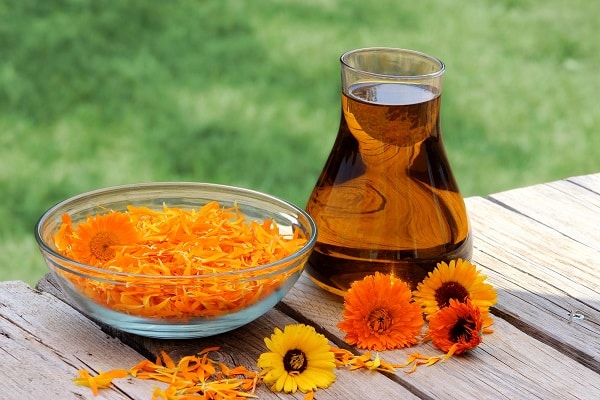
If these agents are ineffective in the fight against numerous insects, the onion is sprayed with chemicals. Good results are shown by the preparation Proclame, SPINTOR, Decis, Bi-58, Tabazol, Metaphos.
Regardless of the type of insect that attacked the onion planting, it is recommended to use aggressive pesticides only in case of severe infection.
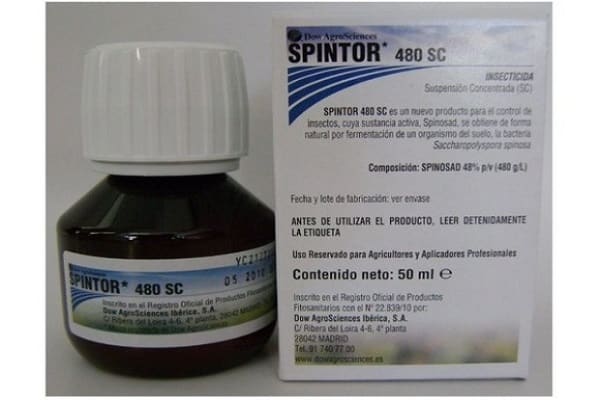
Both the first and the second type of spraying are carried out in dry, quiet weather in the afternoon. To achieve a positive effect, the treatment is carried out periodically.
As you can see, the variety of onion pests is quite large. Having found at least one insect on the plants, you need to immediately begin measures to destroy it. If you do not react in time, the seemingly harmless bugs will eat the whole onion in a matter of days. To reduce the risk of collision with voracious insects, it is recommended to carry out preventive measures, which consist of observing the rules of crop rotation, soil preparation and seeds.
